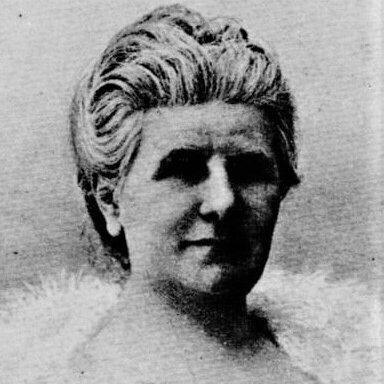Isabelle Massieu

Isabelle Massieu (born Bauche, 3 Apr. 1844, Paris — 7 Oct. 1932, Paris-Suresnes) was a French traveler, writer and photographer, who was one of the first Western women to visit and write about Angkor (in 1896), the first French woman to travel to Nepal and Laos, and an outstanding observer of Asian cultures at the turn of the century.
She first traveled around Europe and the the Middle East with her husband, lawyer Jacques Alexandre Octave Massieu (1835−1891), then led solo travels when she was widowed at age 50 across India, China, Siam, French Indo-China (including the military zones of Haut-Tonkin) and British-ruled Burma. According to her conference to the Société normande de géographie in 1898, she was asked by the French Ministry of Public Education to develop a comparative study of English and French colonial administrations and methods.
In spite of the common misogyny in European academic and mass-media circles (see an example), her travel relations and photographs were recognized as important contributions to the knowledge of Asia at her time. Her visit to Cambodia (a pleasure travel as her ambition was to reach the Upper Mekong Valley) was organized with the help of Colonel Lyautey and Gouverneur-Général Rousseau. She was also close to the Catholic writer Paul Claudel, then French ambassador to Japan.
Antoine Brébion, a specialist in Southeast Asian biographies, wrote that Isabelle Massieu ‘se dirigea vers Ceylan en 1895 et s’enfonça dans l’Inde anglaise, mais la guerre du Tchitral l’obligea à se rabattre sur le Cachemire et le Ladak. De Peschawar, elle remonta à Srinagar et à Leh, visitant les lamasseries tibétaines, elle atteignit le lac Pangong à la frontière chinoise. En 1896 – 1897 elle visita la Cochinchine, le Cambodge, parcourut le Siam, la Birmanie et se rendit aux Etats Shans du Laos. De Luang-Prabang elle gagna Vien-Tian, descendit le Mékhong jusqu ‘à Savannakhet et se rendit à Hué par la brèche de Aï-Lao, puis elle parcourut le Tonkin de Laokai à Lang-Tchéou, d’où elle se rendit à Canton, puis à Shanghaï. De cette ville elle parvient au Yang-Tsé qu’elle remonta jusqu’à I‑tchang. Elle fit une courte apparition parmi les Aïnos de Sakhaline, visita les ports de la Corée et, parvenue à Pékin, traversa en charrette chinoise le désert de Gobi et poursuivit sa route par le Baïkal, Irkoustk, Tomsk et Omsk. Elle évita la voie ferrée du Transibérien et franchit 3.000 verstes pour gagner Samarcande et rentrer par le Caucase à Moscou. Douée de grandes qualités et de volonté, elle accomplit ce long voyage escortée d’un seul domestique, choisissant de préférence les chemins non frayés. Elle avait été chargée d’une mission par le Ministre de l’Instruction publique.’ (Dictionnaire…, p 257) [‘She headed to Ceylon in 1895 and entered English India, but the war in Chitral forced her to fall back on Kashmir and Ladak. From Peschawar, she went up to Srinagar and Leh, visiting the Tibetan lamasseries, and reached Lake Pangong at the Chinese border. In 1896 – 1897 she visited Cochinchina, Cambodia, traveled through Siam, Burma and went to the Shan States of Laos. From Luang-Prabang she reached Vien-Tian, went down the Mekhong to Savannakhet and went to Hue through the gap of Aï-Lao, then she traveled the Tonkin from Laokai to Lang-Tchéou, from where she went to Canton, then to Shanghai. From this city she reaches the Yang-Tse River, going upriver to I‑tchang. She made a brief appearance among the Ainos of Sakhalin, visited the ports of Korea and, having reached Beijing, crossed the Gobi Desert in a Chinese cart and continued on her way through Baikal, Irkustk, Tomsk and Omsk. She avoided the Transiberian railway and crossed 3,000 versts to reach Samarkand and return via the Caucasus to Moscow. Gifted with great qualities and will, she accomplished this long journey escorted by a single servant, preferably choosing unpaved paths. She had been entrusted with a mission by the Minister of Public Education.’]
The Paris Musée de l’Homme holds five volumes from Isabelle Massieu’s photographic Collection, some 600 photos including her own photographic work and prints she collected during thirty years about India, Tibet, China, Indochina, from amateur photographers or illustrious ones (Skeen & C°, G. R. Lambert, Nicolas & C°, W. & P., Wiele & Klein, Lala Deen Dayal, Mohan Lall, Bourne & Shepherd…).

